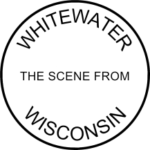 Wisconsin, like most states, publishes sets of scorecards measuring students’ progress. (The overwhelming majority of school districts – 91% – at least meet expectations. Our local district falls within this common group; a few particular schools are admirably above it.)
Wisconsin, like most states, publishes sets of scorecards measuring students’ progress. (The overwhelming majority of school districts – 91% – at least meet expectations. Our local district falls within this common group; a few particular schools are admirably above it.)
Yesterday, the district announced the latest results, after the state’s Department of Public Instruction made them public twelve days earlier. The district announcement brings two points to mind, one small and one large.
First the small: an obvious coordination in the announcement on the same day (district news release, district automated calls announcing the release, and school board member’s use of his ersatz news site to promote uncritically that same release) offers yet another example supporting my view from yesterday on conflicts of interest (see, Conflicts of Interest Don’t Explode, They Corrode). I almost feel as though I should offer my thanks to all concerned.
And yet, and yet, there’s a second, larger point: these state scores are not the substantive learning – often immeasurable – on which hopeful adventure and exploration depend. Last month, I wrote about James Fallows’ Eleven Signs a City Will Succeed, and his eighth sign seems especially relevant:
8. They have unusual schools. Early in our stay, we would ask what was the most distinctive school to visit at the K–12 level. If four or five answers came quickly to mind, that was a good sign.
The examples people suggested ranged widely. Some were “normal” public schools. Some were charters. Some emphasized career and technical training, like Camden County High School, in Georgia. Some were statewide public boarding schools, like the South Carolina Governor’s School for the Arts and Humanities, and the Mississippi School for Mathematics and Sciences. Some were religious or private schools. The common theme was intensity of experimentation.
(See, from this website, James Fallows on ‘Eleven Signs a City Will Succeed’ (Part 1) and (Part 2).)
There it is, honest to goodness: success for students – and so for a community – comes from distinctive programs and distinctive study, from which particular scores are merely imperfect (sometimes misleading) measurements.
This community – like countless misguided communities – mistakes the map for the terrain. People don’t walk through a map, of course: they walk, variously, through woods, fields, mountains, or beaches.
Scholastic scores like these are touted in communities either through ignorance, a pandering to the ignorance of others, or for futile competitive advantage (which often combines the first two reasons). Whitewater’s been using this public-relations approach for years, to no clear advantage for students or the community.
There are so many subjects, considered so many times, that are more important than a few charts from a state agency.
The academic exploration that underlies a mere chart is that from which dreams are, truly, made.
